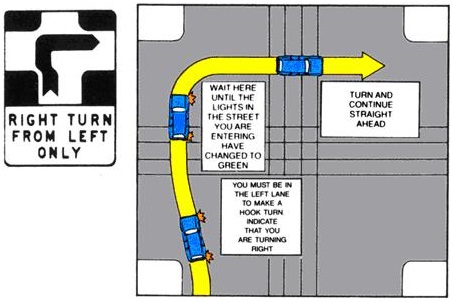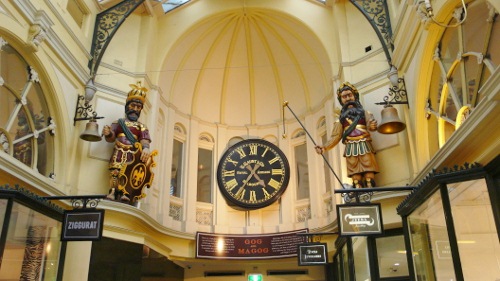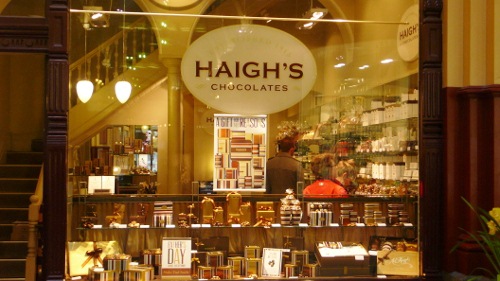Immigration
Since I myself am now also an immigrant, I made myself knowledgeable on the subject.
For information about Australia as an immigration country, you might wish to start with the Victorian Immigration Museum. Up until the 1960ies, the government encouraged Australian citizens to talk to friends or relatives in Europe about immigrating to Australia.
Without the immigration waves between the 19th and the middle of the 20th centuries, the conquest of this huge country would not have been possible. (It is a separate story how the rich Aborigine culture was almost totally destroyed in the process).
By now, much has changed. To be sure, in absolute numbers, Australians with origins in Europe and the USA are still the majority. But immigration from India and, above all, China, increases considerably.
A few days ago, there was a long article in the local newspaper „The Age“, announcing that apartments in a new building in the district of Glen Waverly were open for inspection on the weekend (that is standard procedure if someone wants to sell or rent out property: a certain day for inspection of the objects is set, and then they are sold according to the principle „first come first serve“). For the agent, it came as a total surprise that the interested parties were almost exclusively Chinese. Some of them were actually prepared to pay up to 40,000 $ above the asked price for a certain apartment. The fact that 16 apartments were sold for a total of 40 million dollars on that day shows how solvent the interested parties were.
By now, the ratio of Australians with Chinese origins (who have a permanent permit to stay) in those 15 districts of Melbourne where Chinese like to live is between 27% and 16%. According to a survey, these districts are chosen because they have good schools, good public transport and an active Chinese community. For the Melbournians of Caucasian descent, this situation is a challenge, because they witness how – right under their noses and quite obviously for everybody – Melbourne is changing. Unfortunately, it also causes numerous racist escapades.
The name of the first Chinese school in Melbourne is quite remarkable: „Xin Jin Shan Chinese Language and Culture School“. Xin Jin Shan roughly translates into ”New Golden Mountain“. Incidentally, that is the name the Chinese gave the Australian gold mines in 1850 to distinguish them from the Californian gold mines that were running dry at the time. Those were called Jiu Jin Shan (”Old Golden Mountain“).
Mind you, today the majority of modern Chinese who immigrate to Australia are no longer looking for their one chance in life; they are already a success and wish to secure and maintain their prosperity.
Downtown Melbourne
Here is a totally different issue: to be sure, we live quite nicely in the outskirts of Melbourne at Williamstown, but downtown Melbourne (also known as CBD “Central Business District”) has an inimitable flair. In fact, it can even hold a torch to Paris.
Traffic is more or less what you would expect to find in a city with 4.5 million car enthusiastic citizens. Even a reasonable public transportation system, along with the fact that one hour parking at the garage is 16 $ and a parking ticket costs a minimum of 180 $ do not seem to make any difference. In between the densely packed cars, you will frequently find bike couriers maneuvering their way through the traffic. They must either have finished all they ever wanted from life and are thus ready to die, or else are practicing for the next Tour-de-France.
Information for all car drivers: in the city centre, you will find so-called Safety Zones where you will have to use the left (!) lane if you want to turn right – it is the notorious Melbourne ”hook-turn“. It is supposed to make it possible for those on the right lane to go ahead unimpeded; however, it will only work if the first driver who wishes to make a turn starts in Formel-1 fashion; if he fails to do that, there will be an ear-splitting signal-horn concert, because, naturally, nobody behind him wants to remain sitting in the middle of the crossing.

Many houses in the city centre were built in the middle of the 19th century, when Melbourne was the world’s richest city. Of course, this was due to the gold rush – at the time, around 1/3 of all the world’s gold was mined in Australia, with the most yielding gold fields in Victoria, not far from Melbourne. To this day, this prosperity is obvious if you look at all those noble bourgeois and business houses.
The special flair of the city centre is also due to the arcades and lanes, the creative (sometimes also endearingly scurrilous) shops and the thousands of bars, coffee shops and restaurants. The most beautiful and elaborately decorated one of them is the Royal Arcade.
The Royal Arcade is guarded by the biblical giants Gog and Magog.

Apparently, some of the arcades in a side lane simply came into being because the owners of the restaurants and bars joined forces and had some protection against rain spun over the street; all you need after that is a few chairs and (in winter) an electric heater and the place will quickly be so crowded at lunch and in the early evening hours that you can no longer pass.
The place is particularly full on Fridays after 4.30 p.m. – because that is when almost all employees working in the CBD offices go to the pub for a pre-weekend drink. Now, in spring, you can hear street musicians playing at almost all corners. To me, it seems that the quality of the music is considerably better than, for instance, in Munich. In Australia, Blues and Country are particularly popular.

Chocolatiers and candies shops are currently very much loved in Melbourne. In fact, the Melbournian love of sweets sometimes borders on the bizarre. For instance, there is an Italian restaurant in Carlton where you can get “Chocolate Pizza“.
In the CBD, there are excellent restaurants serving Mediterranean cuisine (Spanish, French, Italian, Greek, Turkish, Lebanese, Moroccan,…). Melbournians are enthusiastic about European cuisine – if you want to eat out for dinner, you have to make a reservation no matter where you are going.
For the critical immigrant from Munich, it remains to be noted that the price-performance ratio cannot always come up to Munch standards. To make up for it, many restaurants and bars have the sitting-room atmosphere of first-class English pubs.
I will be back with my next report – No Worries
JRO
(Translated by EG)
